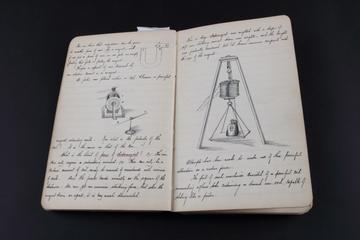
Tutton, Alfred Edwin Howard 1864 - 1938
- Nationality:
- British; English
(1864-1938), Crystallographer
Alfred Edwin Howard Tutton was born on the 22 August 1864 at Stockport. He attended the national school, Edgeley, leaving at the age of thirteen to work in the office of the town clerk of Stockport. In the evenings he attended classes at the mechanics' institute and chemistry lectures by Henry Roscoe at Owens College, Manchester. In 1883 he gained a royal exhibition to the Normal School (later Royal College) of Science and Royal School of Mines at South Kensington, where he won the Murchison medal for geology and the prizes for physics and chemistry. After a fourth year, with a teaching scholarship, he became an assistant demonstrator in chemistry, being promoted full demonstrator and lecturer in 1889.
During the years 1886 to 1892 Tutton assisted Edward Thorpe in research work on the role of phosphorus oxides in the ‘phossy jaw’ disease of matchmakers. The beautiful crystals of the new tetroxide (P2O4) turned his attention to crystallography which then, in private laboratories at his successive homes, became his life's work. He specialized in the precise measurement of the morphological, optical, elasticity, and thermal expansion constants of artificially grown crystals of various isomorphous series. One large series of hydrated double sulphates and selenates of alkali and bivalent metals came to be known as Tutton salts. He demonstrated that, in each series, these physical constants vary with the atomic weights of the replacing chemical elements.
Tutton's work was marked by the highest degree of accuracy, down to the minutest detail. A modified form of his interferometer was used to determine, in 1931, the length of the imperial standard yard in terms of the wavelength of light; his result was 1,420,210 wavelengths of the red cadmium line at 62 °F. In 1895 Tutton was appointed inspector of technical schools under the Board of Education, which was located successively in Oxford, London, and Plymouth. While in Oxford he was awarded the degree of DSc in 1903. On retiring from the Board of Education in 1924, Tutton moved to Cambridge where he lectured on crystallography until 1931 when he settled at Dallington, Sussex.
Tutton wrote five books on crystals and crystallography; his Crystallography and Practical Crystal Measurement (1911; 2nd edn, 2 vols., 1922) was for many years a standard treatise. His recreations were music and alpine photography. For thirty years he spent his holidays in the Alps and used many of his numerous photographs to make lantern slides for his lectures. He wrote The Natural History of Ice and Snow, Illustrated from the Alps (1927) and The High Alps (1931). He was a fellow of the Chemical Society for fifty years, was elected FRS in 1899, and was president of the Mineralogical Society from 1912 to 1915. He received the honorary degree of DSc from Manchester University in 1926.
In 1902 he married Margaret Ethel MacLannahan, near Oxford; they had two sons and four daughters. Tutton died at the Royal East Sussex Hospital at Hastings on 14 July 1938.